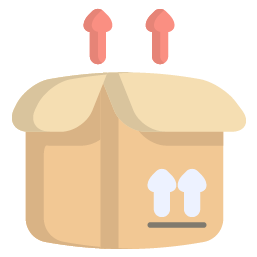Clutter isn’t just about things piling up. It often tells a deeper story about our emotions, memories, and even fears. To truly clear your space, it helps to understand what’s really holding you back — and how to gently release those ties.
Emotional Attachments: More Than Just Objects
Have you ever noticed how certain items instantly bring back vivid memories? A childhood toy, a gift from a loved one, or even an old ticket stub. These things aren’t just stuff; they’re anchors to our past. Letting go can feel like saying goodbye not only to the object but also to the memory it represents.
But here’s the secret: memories live inside you, not in the things. Holding onto a physical item doesn’t preserve the memory any better than a photo or a story shared. Sometimes, creating a small, dedicated memory box helps — a place where the most meaningful pieces can stay without overwhelming your living space.
The Fear of Wasting and Regret
Why do we keep things “just in case”? It’s a common feeling — the fear that one day we might need something and regret having thrown it away. This mindset is rooted in scarcity, the belief that resources are limited.
Shifting this perspective isn’t always easy, but it’s powerful. When you start trusting that you can replace or do without an item, you open up space — both physically and mentally. Remember, the value of an item isn’t just in what it is but in how it serves you right now.
Objects as Extensions of Identity
Sometimes, clutter forms because we attach our identity to possessions. Perhaps you keep sports equipment to remind yourself of being active or hold onto books you plan to read “someday.” While these connections can motivate, they can also trap us if the items become a source of guilt or pressure.
Ask yourself: Do these belongings reflect who I am today? Are they helping or hindering my current goals? Being honest can help you decide what truly deserves a place in your life.
Overwhelm and Decision Fatigue: Why It’s So Hard to Start
Standing in front of a messy closet or an overflowing drawer can be intimidating. The sheer amount of stuff can cause stress and indecision, leading to avoidance.
The trick is to break down the task. Start with one corner, one drawer, or even one type of item. Set a timer for 15-20 minutes, focus fully during that time, then take a break. Small, consistent efforts add up to big changes.
Practical Steps to Letting Go
There’s no one-size-fits-all solution, but some approaches have helped many people:
- Begin with areas that cause the least emotional attachment to build confidence.
- Sort items into categories based on how often you use them.
- Create “maybe” piles if you’re unsure, but revisit them quickly to avoid procrastination.
- Think about the future: Will this item support my lifestyle or dreams?
- Celebrate your progress — even small wins matter.
The Mental Shift: From Cluttered to Clear
Beyond the physical act of decluttering is a mindset transformation. When you clear your space, you’re also creating room for clarity, calm, and creativity in your mind. Many find that organized surroundings reduce anxiety and improve focus.
Remember, organizing is not about perfection. It’s about creating a space that supports your well-being and reflects your life’s priorities.
Final Thought
Letting go of clutter is a journey — sometimes emotional, often freeing. By understanding why we hold on and embracing thoughtful strategies to release, you’ll open the door to a home that feels lighter, brighter, and truly yours.
